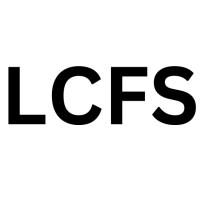Summary
Cut through the green tape
We don't push agendas. At Net Zero Compare, we cut through the hype and fear to deliver the straightforward facts you need for making informed decisions on green products and services. Whether motivated by compliance, customer demands, or a real passion for the environment, you’re welcome here. We provide reliable information—why you seek it is not our concern.
Details
Deep dive
Background
The California Low Carbon Fuel Standard (LCFS) is a market-based regulatory program designed to reduce greenhouse gas emissions in the transportation sector under the California Global Warming Solutions Act of 2006. The LCFS has been implemented in California since 2011 by the California Air Resources Board (CARB) following its approval in 2009. The LCFS aims to promote the use and production of cleaner, low-carbon transportation fuels in California, thereby reducing greenhouse gas (GHG) emissions and decreasing reliance on petroleum in the transportation sector. The LCFS sets standards based on the Carbon Intensity (CI) of gasoline, diesel, and their alternatives, measuring the total life cycle greenhouse gas emissions associated with each fuel. This life cycle assessment accounts for emissions of Carbon dioxide (CO₂), Methane (CH₄), Nitrous oxide (N₂O), and other GHGs generated during the fuel's production, transportation, and consumption. The carbon intensity (CI) scores assigned to each fuel are evaluated against an annually declining CI benchmark. Fuels with a CI below the benchmark generate credits, while those above the benchmark generate deficits. For each annual compliance period, the LCFS requires transportation fuel providers to show that the mix of fuels they supply in California complies with the LCFS carbon intensity standards or benchmarks. The LCFS is part of California's broader climate strategy which includes the Mandatory Greenhouse Gas Reporting Program (MRR) and more recently the Climate Corporate Data Accountability Act (CCDAA). The LCFS incentivizes fuel producers to lower the carbon footprint of their products by earning credits for low-carbon fuel production or purchasing credits from other compliant entities.
Emissions reporting requirements
Under the LCFS, carbon emissions reporting is a major requirement to ensure compliance. Fuel suppliers, including refiners, importers, and blenders, must submit detailed life cycle emissions data to CARB through the LCFS Reporting Tool and Credit Bank & Transfer System (LRT-CBTS). This data must be reported quarterly and annually to verify compliance with CI reduction targets. The Annual Compliance Report, due by April 30 of each year, is a key document in which regulated entities show their compliance with the program. Fuel producers must track and report their emissions from production, transportation, and end-use consumption, using CARB-approved methodologies and verification procedures. For each annual compliance period, fuel providers are required to show that the mix of fuels they supply in California complies with the LCFS carbon intensity standards or benchmarks.
Affected entities
The LCFS applies to a wide range of fuel providers, including oil refiners, biofuel producers, natural gas suppliers, and electricity providers offering alternative transportation fuels. Companies that produce, import, or sell transportation fuels in California are required to participate. The program covers hundreds of firms including major oil companies, renewable energy firms, and electric utilities. Compliance entities can generate, sell, or purchase LCFS credits depending on whether their fuels meet or exceed CI benchmarks. This broad industry participation has fostered innovation and investment in clean energy technologies.
Penalties for noncompliance
Enforcement of the LCFS is strict, with penalties for noncompliance ranging from financial fines to legal actions. As stated in the LCFS regulations, if a regulated entity fails to meet its CI reduction targets, it must buy additional LCFS credits or face penalties under California Health and Safety Code Section 38580. CARB has the authority to impose fines of up to $10,000 per day per violation for noncompliance. Moreover, companies that misrepresent emissions data may be subject to audits, increased penalties, and possible suspension from the program. According to enforcement data provided by the CARB, there have been 23 settlements between April 2017 and January 2025 in relation to LCFS reporting violations. For instance, BP Products North America, Inc. (BP), and AltAir Paramount LLC (AltAir) were respectively fined $188,000 and $132,500 for violating section 95494 of the LCFS regulation which requires quarterly and annual reports to be submitted completely and accurately.


